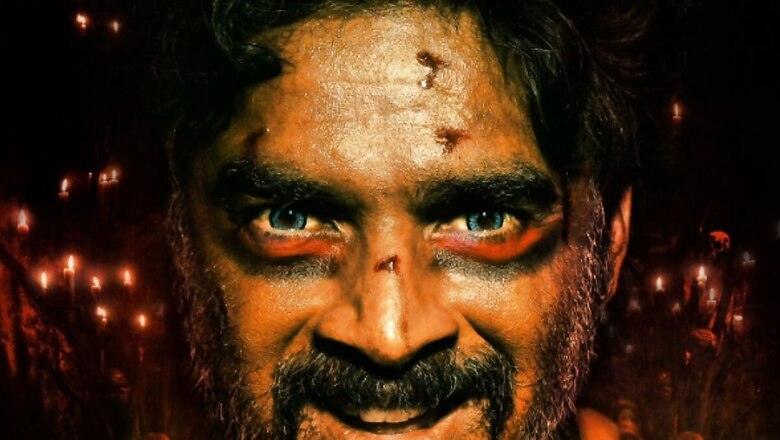
views
A middle-aged man with a salt-and-pepper beard who helps his daughter solve a mathematics problem by explaining the underlying logic of a quadratic equation over the phone would be the furthest from the mumbo-jumbo of black magic. Or so we thought. Till we realised that this avuncular Vanraj in Shaitaan (2024) was a sorcerer out to hypnotise young Janhvi using black magic.
The tropes of black magic and occult have existed in Hindi films for a long time with teenaged/tweenaged girls falling easy prey to the practitioners of this dark craft. In Gehrayee (1980), the caretaker Biswa takes revenge on his wealthy landowner Chennabasappa for selling off large fertile tracts of the plantation – an act that Biswa considered akin to Chenabasappa selling off Biswa’s mother. Further, many years ago, Chennabasappa had made Biswa’s wife pregnant, driving the shamed woman to suicide. Biswa exacts his revenge by having a Tantrik (occultist) cast a spell on Chennabasappa’s teenage daughter Uma. To make things worse, another Tantrik takes advantage of the situation by kidnapping Uma and trying to sacrifice her to a ‘goddess’ by performing a ‘devi pooja’.
Cult, religion and black magic have also been observed to be drivers of serial killing. In the recent film Shaitaan, Vanraj planned to throw no fewer than 108 young girls into a fire to achieve his insane ambition of lording over mankind. In Amrit Manthan (1934), a Rajguru (high priest) has a fanatical obsession with human and animal sacrifices. In the end, Rajguru offers his own head to the goddess in sacrifice. In Sunghursh (1968), priest Bhavani Prasad of Kashi, under the excuse of trying to please Goddess Kali, kept murdering the guests at his inn. The confidence and calm with which he denied murdering his own son was terrifying. He is another pathological liar who has no sense of right and wrong—typical psychopathic behaviour. Sunghursh (1968) was based on Mahasweta Devi’s novel, ‘Layli Aasmaner Ayna’, about the Thugee cult of Varanasi in the nineteenth century that committed professional robberies and murders. Darinda (1977), too, was about a Shaivite cult and black magic in which a Yogi (Sunil Dutt, in an unusual role) hypnotised seven young girls in front of Lord Shiva and made them jump off a cliff to their deaths. Like Bhavani Prashad, Yogi too, was indifferent about his crimes.
Sangharsh (1999), based on the Oscar-winning Silence of the Lambs, was another example of a serial killer Lajja Shankar Pandey murdering children during a solar eclipse in the name of sacrifice to Goddess Kali because he believed that this human sacrifice would make him immortal. The occult was once again behind the serial killings in The Stoneman Murders (2009), a film based on true events. The murderer bludgeoned eight pavement dwellers in the name of a tantric-prescribed nar-bali (human sacrifice) that he believed would cure his impotency. The ridiculousness of occult beliefs can go to any extent. To cure his uncontrollable sexual urge, Dheeraj Pandey in Murder 2 (2011) undergoes a bizarre ‘surgery’. Actor Prashant Narayanan who essayed the eunuch, cross-dressing, psychopathic serial killer, said, “This sex-crazed guy is a sort of vigilante who has a problem with prostitutes. So, as advised by a ‘cult goddess’, he chops off his penis so that he wouldn’t be distracted from his mission to kill bad women!” Dheeraj’s sexual energy now gets channelled into another outlet—that of torturing and dismembering call girls.
Not all practitioners are bad. There have been those good men who helped relieve innocent girls possessed by victims. In Jadu Tona (1977), a priest releases young Harsha from the clutches of a dead man’s spirit that had entered Harsha’s body and made her take bloody revenge on the three persons who had killed the man. Raat (1992), influenced by the 1973 film The Exorcist (just like Jadu Tona was), was another instance where medical science failed but Sharji and his magic ash succeeded in exorcising the spirit of the dead woman that had taken control of young Manisha. In Gehrayee, it was eventually a Mantrik who unearths the root-causal voodoo doll inside the house and successfully orders the spirit to leave Uma’s body. While exorcism has been seen to be effective in driving away evil spirits that enter unsuspecting humans, villains like Rajguru, Bhavani Prasad, Yogi, Lajja Shankar Pandey and Dheeraj Pandey are harder to snuff out because they not only practice pure evil but also propagate, teach, influence. And hence, spread. Much like Damien in The Omen. No demon or spirit had entered Damien’s body. He was the Satan.
This brings us to the linkage of this genre of films with religion. Films like Dracula movie series, Rosemary’s Baby (1970), The Exorcist (1973), and The Conjuring (2013) had supernatural occurrences with an evil spirit (The Exorcist) or a demon (The Conjuring) or the Antichrist (The Omen) as the principal villain. The ‘666’ in The Omen signified the diabolical trinity – Devil, Antichrist, and false prophet. And hence, the tagging of religion in the storyline. In Bollywood, the Ramsay Brothers too practically monopolised the supernatural space, with crucifixes, Lord Shiva’s trident, punctuated by the ‘Om’ symbol and the occasional picture of Jesus on display in their films. Their storylines included Christian rituals and Hindu mythology. To that extent, they were secular.
Balaji Vittal is a National Award-winning and MAMI Award-winning author of Bollywood books, a columnist, a TEDx speaker and a Bollywood commentator. He tweets @vittalbalaji. Views expressed in the above piece are personal and solely that of the author. They do not necessarily reflect News18’s views.
















Comments
0 comment